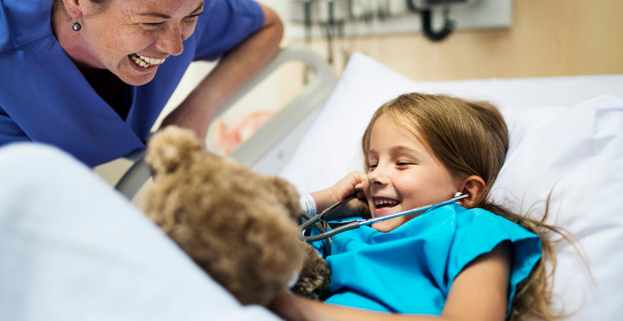Pediatric Anesthesiologist – Prepare Your Kid for Next Surgery!
No doubt about it, getting an operation can be stressful for children and adults alike. If your child is scheduled for any surgery, you may have lots of questions and concerns about anesthesia. Whether your little one is 2 years or 18 years old, the thought of your child going under anesthesia can be downright scary.
Knowing the basics about anesthesia may answer your questions and ease some concerns, whether the anesthesia involves a local anesthetic to numb the operative area or a more extensive anesthetic where you child will asleep.
What is Anesthesia?
Anesthesia is the use of medicine to keep a person form feeling pain during a medical or surgical procedure. The anesthetic reduces sensation in the affected area and can also be used to make the patient unconscious. When it renders a patient unconscious, it is usually given as an injection or through inhaled gases, a process known as induction. Induction is the process of bringing a patient form a state of wakefulness to an anesthetic state, so they have no pain or awareness of the procedure. In surgical centers and hospitals, a highly trained anesthesiologist uses a myriad of medications and closely monitor patients vital signs with modern technologies.
However, as simple as an inhaled anesthesia induction sounds, it is not. In truth, inhalation of anesthetic gases remains the number one stressor for a child. Imagine yourself held hostage by strangers as they tightly place a plastic mask over your face and force you to breathe foul-smelling gases, then hold you tightly to keep you from moving if you resist. No wonder why they become uncooperative and recalcitrant.
How can we make kids comfortable with induction of anesthesia?
The PEDIA comes with plenty of innovative methods that have been employed to change the process of induction from one of fear to one of fun. Our motto is “Turn Panic into Play” because play is a child’s best coping mechanism. The operating room is a place of high stress and needs play. The PEDIA Anesthesia Balloon delivers. The whistling balloon has been popularly used for this purpose.
The anesthesiologist or preoperative nurse or child care specialist visits the child in the preoperative area to show the PEDIA to the child. There is even a fun video that instructs and engages the child on the proper use of the device. The child gets to choose the color of the balloon…because choice is of great import to relieve a child’s stress. In the operating room, the anesthesiologist instructs the child to inhale and exhale through the balloon and, before you know it, the child is asleep. Induction then proceeds as normal: no fuss, no muss.
It is interesting to note that most of the kids got attracted to our technique and participated happily. Giving anesthesia to kids by taking them in confidence can be a big challenge. Despite the alien environment and the absence of parents, kids were found to be cooperative in our observation. As observed in various cases, this technique works well in children aged 3 years and older.
Apart from giving anesthesia in preparation for the surgery, the anesthesiologist will:
- Monitor your child’s major bodily functions, including blood pressure, breathing, heart rate, and oxygen level during the surgery.
- Addresses any problems that might arise during.
- Manages any pain your child may have after surgery.
- Keep your child as comfortable as possible before, during, and after surgery.
Wrap Up:
A comfortable, mask-free, stress-free anesthetic is one of our top priorities at PEDIA. Give us a call at 703-966-9578 or email contact@pediallc.com for a consultation!




